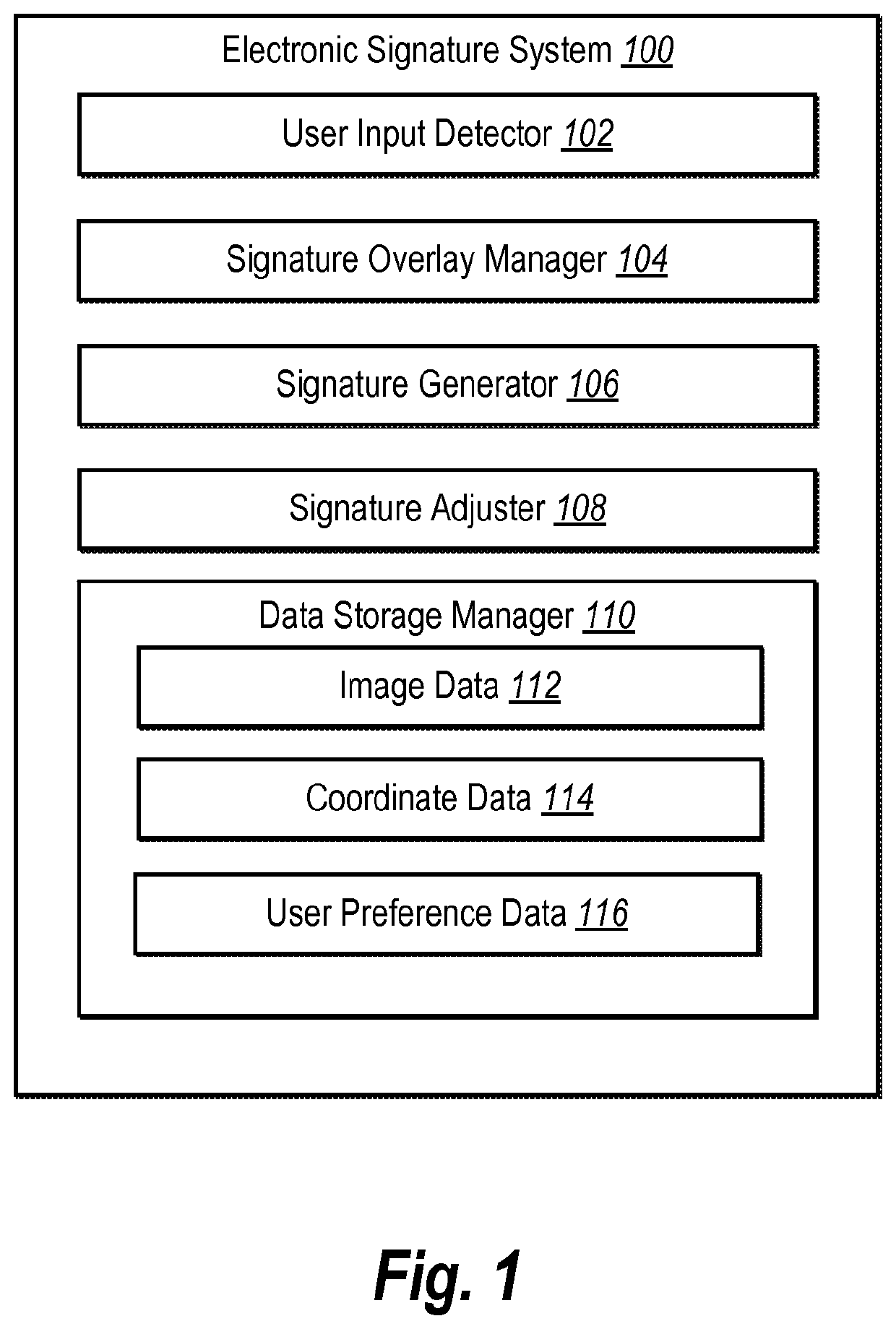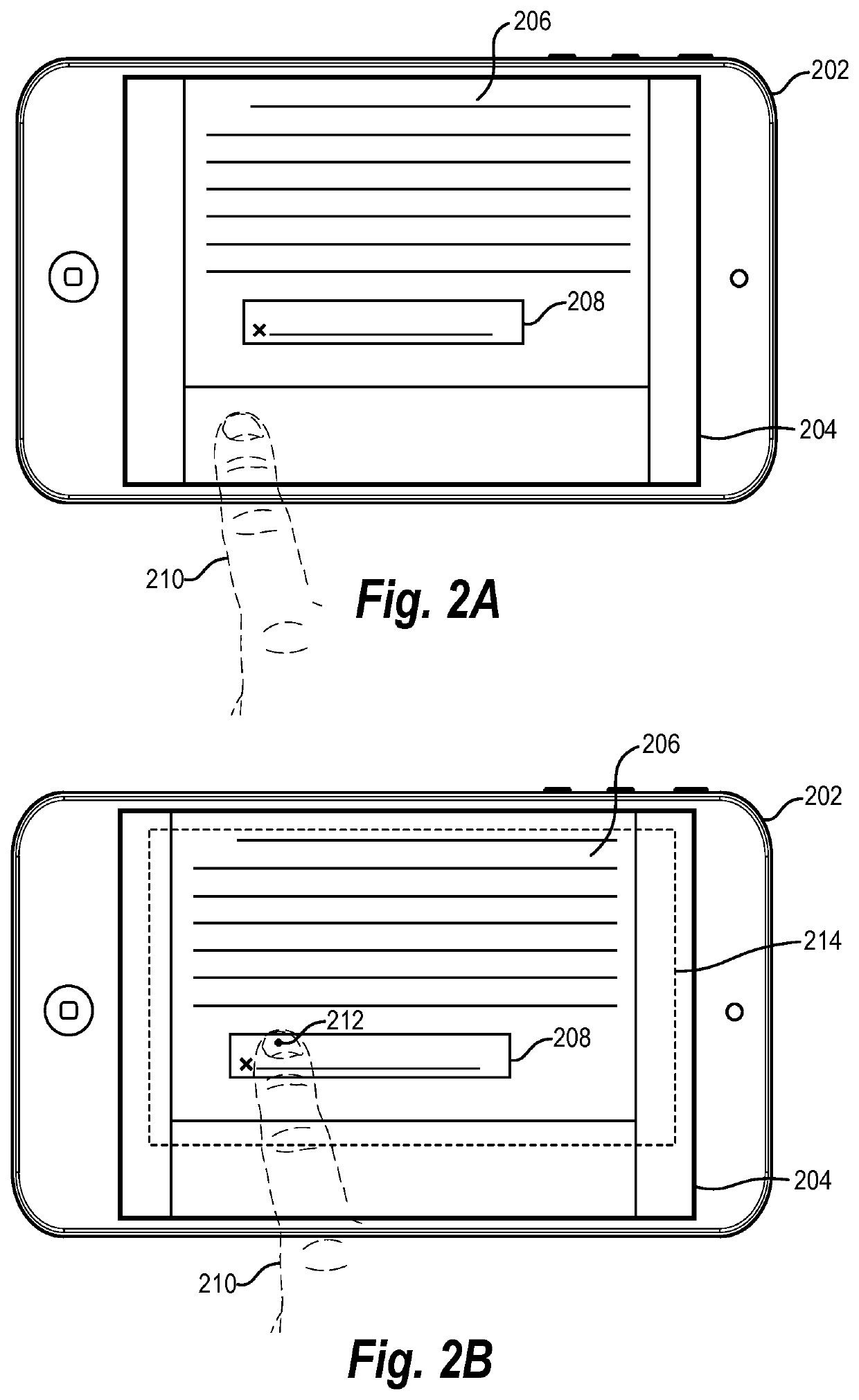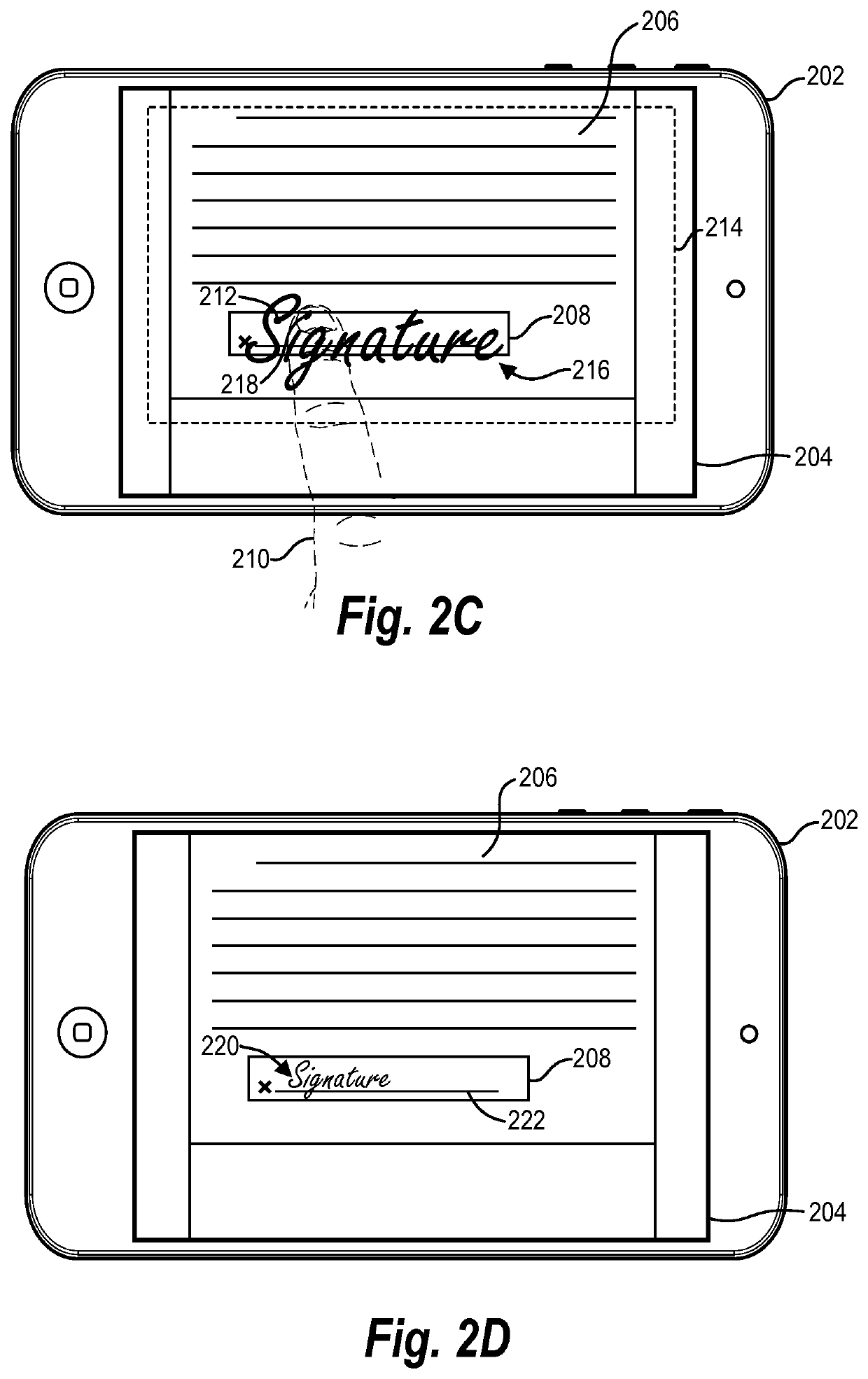Capturing electronic signatures using an expanded interface area
a technology of electronic signature and interface area, applied in the field of electronic signature acquisition, can solve the problems of unprofessional appearance of scanned images of documents, inability to approximate the user's actual signature, and inability to provide predefined font types, etc., to achieve accurate and efficient representation of user's signature, the effect of accurate and efficient provision
- Summary
- Abstract
- Description
- Claims
- Application Information
AI Technical Summary
Benefits of technology
Problems solved by technology
Method used
Image
Examples
Embodiment Construction
[0030]One or more embodiments of the present disclosure include an electronic signature system that allows a user to easily sign an electronic document with an electronic signature that accurately reflects the user's actual signature. In particular, in one or more embodiments, the electronic signature system detects a user interaction with a bounded area of an electronic document that indicates a user wants to provide a signature in the bounded area. In response, the electronic signature system can provide an interface area (such as a signature overlay) having a signature capture area that is larger than the bounded area and positioned so that the interface area encompasses the bounded area. The interface area can receive user input representative of the user's signature, provided by the user via an input device (e.g., mouse, trackpad, touchscreen), and generate an original signature within the signature capture area of the signature overlay. Additionally, in one or more embodiments...
PUM
 Login to View More
Login to View More Abstract
Description
Claims
Application Information
 Login to View More
Login to View More - R&D
- Intellectual Property
- Life Sciences
- Materials
- Tech Scout
- Unparalleled Data Quality
- Higher Quality Content
- 60% Fewer Hallucinations
Browse by: Latest US Patents, China's latest patents, Technical Efficacy Thesaurus, Application Domain, Technology Topic, Popular Technical Reports.
© 2025 PatSnap. All rights reserved.Legal|Privacy policy|Modern Slavery Act Transparency Statement|Sitemap|About US| Contact US: help@patsnap.com



